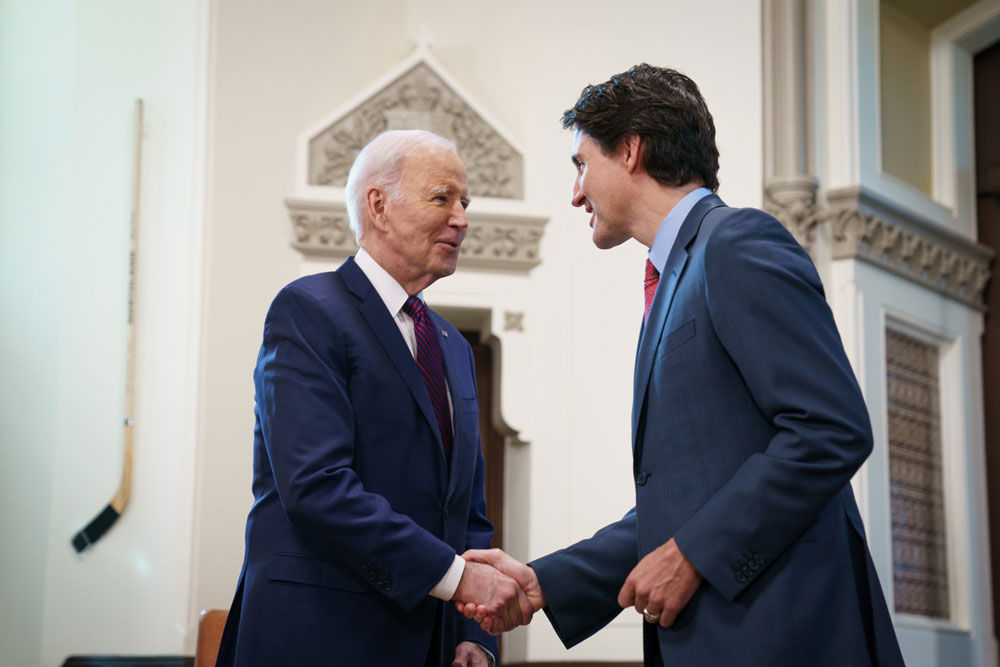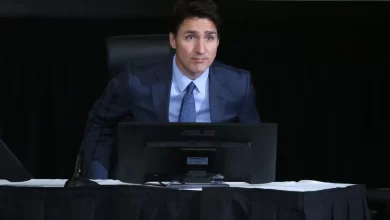collaborating with the United States to expand Canada’s clean economies and create middle-class jobs across the border
Taslima Jamal
From March 23 to 24, Prime Minister Justin Trudeau welcomed Vice President Joe Biden to Canada to build on our long-standing partnership and close friendship and make life better for people on both sides of our shared border. In a joint statement, the leaders pledged to make significant progress on a number of shared goals, such as expanding the middle class, making life more affordable for all, creating good jobs through clean growth and economic integration, taking ambitious climate action and protecting the environment, defending North America and advancing peace and security worldwide.
Both Canada and the United States are investing a lot to build clean economies and expand the middle class. The two leaders agreed to continue discussions to incorporate Canadian goods into Buy America requirements in order to continue making life more affordable and creating jobs for the middle class. The leaders of Canada established an Energy Transformation Task Force to accelerate our cooperation across the entire clean economy spectrum over the course of the following year. The Prime Minister also made the announcement that Canada is moving forward with a new investment tax credit for manufacturing clean technology. The leaders agreed to collaborate on renewable energy and electric vehicle supply chains, the critical minerals value chain, nuclear energy, and aligning zero-emission vehicle (ZEV) infrastructure to create new opportunities for people to thrive and have great careers. They will also work together to promote trade in clean goods, including clean steel and aluminum.
We will develop a cross-border semiconductor manufacturing corridor with the help of the United States. This will begin with the signing of a deal between IBM and Canada to expand domestic semiconductor packaging research and development. Canada plays a crucial role in the North American semiconductor ecosystem, and semiconductors enable advancements in clean energy, communication, computing, and more. Along with increasing North American competitiveness and supply chain resilience, reducing pollution, fostering economic and national security, and creating good middle-class jobs, Canada’s investment of up to $250 million in this sector will also help.
We are expanding the Safe Third Country Agreement to apply across the entire land border, including internal waterways, in order to combat irregular migration and guarantee fairness and more orderly migration between our two countries. On Saturday, March 25, 2023, at 12:01 a.m. (EDT), this modification will take effect. In addition, Canada announced that, as an alternative to irregular migration, we will provide 15,000 migrants from the Western Hemisphere with a path to economic opportunities in order to address forced displacement.
We know, in both Canada and the United States, that if we want our economies to continue expanding and ensuring that people have the best opportunities for success, we must take bold, ambitious steps to combat climate change and protect more of nature. As part of our renewed joint commitment to preserving and restoring these iconic waters and ensuring the resilience of the communities and individuals who depend on them, Canada is investing an additional, historic $420 million to further protect the Great Lakes, which are a source of pride for both Canadians and Americans. This Canadian investment continues our partnership in fighting pollution and protecting our waters, building on our 50 years of cooperation. The leaders also agreed to renew and accelerate their commitments to the environment and nature, which included reducing pollution from their respective electricity grids. In addition, they pledged to continue collaborating with Indigenous peoples to provide clean air and to advance Arctic conservation and environmental protection.
Through the North American Aerospace Defense Command (NORAD), Canada is also contributing financial resources to the defense of North America. To ensure that our troops have the best equipment to defend North America and to support the arrival of our brand-new fleet of F-35 fighter jets, the Prime Minister announced a $7.3 billion project to upgrade and construct new fighter infrastructure. He also said that our threat tracking and early warning Arctic Over the Horizon Radar (OTHR) system will be in Southern Ontario to complement a system that will be in the Canadian High Arctic in the future. In order to significantly increase situational awareness of potential threats to our continent, these Canadian systems will complement planned U.S. systems. These initiatives are supported by Canada’s $38.6 billion plan to upgrade continental defense.
Through the Cross-Border Crime Forum, the leaders also pledged to intensify cooperation to safeguard our critical infrastructure from cyberattacks, enhance intelligence sharing regarding cross-border fentanyl and precursor chemical trafficking, and lessen gun violence.
Canada is contributing an additional $100 million to the Haitian National Police’s policing support and equipment in order to support Haitian-led solutions to the crisis and peace and security around the world. Canada is likewise forcing extra authorizes on two additional individuals from the Haitian tip top, bringing the absolute of people straightforwardly endorsed by Canada to 19, notwithstanding planned sanctions with our global accomplices. The former senator Nenel Cassy’s and businessman Steeve Khawly’s assets will be frozen and inadmissible to Canada as a result of these sanctions.
The Prime Minister and the President reaffirmed their support for Ukraine, criticized Russia’s illegal, barbaric, and unprovoked aggression, and acknowledged the People’s Republic of China’s long-term threat to the international order. In order to safeguard our democratic principles, the leaders will continue to collaborate on countering foreign interference. The U.S.-Canada Indo-Pacific Strategic Dialogue, which took place on March 10, and the President’s support for Canada’s membership in the Indo-Pacific Economic Framework (IPEF), among other topics, were also topics of discussion.
During his visit, the President made a location to Parliament and went to a supper facilitated by the State head, developing areas of strength for the, and novel kinship between our nations and individuals who call them home.
The United States of America and Canada have been steadfast partners, and we will continue to collaborate closely to lower living costs, create good jobs, safeguard the environment, and advance peace and security worldwide.





